When the Stack Becomes a Network: Rethinking the Architecture of Martech
For more than a decade, every Martech presentation included a similar architecture slide: rectangles stacked neatly from data at the bottom to experience at the top.
Each layer had a purpose, an owner (hopefully), and a sense of order. But as we move toward an era of AI agents, that world is starting to dissolve. Architectures are no longer built in layers, they’re built in connections.
From Static Systems to Agentic Networks
If you’ve worked in data or marketing technology long enough, you can immediately picture the stack diagram: data layer → identity → activation → analytics.
This gave structure and made complex systems legible to executives, partners, and teams. It works well, the “stack” implies hierarchy, stability and even ownership. It’s pretty aligned with how marketing teams operate, with linear workflows.
Each application had predefined behaviors and deterministic capabilities: a master data management (MDM) solution unified profiles, a marketing automation platform (MAP) sent emails, an analytics system tracked conversions.
These systems were deterministic. They did what you told them, in the way they were designed. Predictability was both their strength and their constraint.
Now, a new form of architecture is emerging. Instead of static applications, we’re starting to work with agentic systems — autonomous solutions that act with probabilistic logic, context, and sometimes ambiguity.
The Agentic Era: Connections Over Layers
Where stack architectures were composed of boxes, we now have networks composed of connections. This transition breaks the simplicity of the old stack model.
Autonomous agents move across layers. And there will be many more agents in an organization than there ever were applications, making this new architecture harder to represent in a diagram.
AI agents don’t respect data layers or organizational charts. They communicate across tools, around teams, and sometimes without explicit orchestration.
Imagine an AI content agent rewriting an email based on insights from a predictive model, triggered by performance data that came from yet another system. There’s no top or bottom to that workflow. It’s a web of intent and response.
Underneath the old diagrams, marketing operations will start to behave more like graphs — clusters of nodes exchanging signals dynamically. Instead of “layering” systems, we’re linking them.
It reminds me of neural networks, interconnected nodes that exchange signals and adapt based on context. And as agents proliferate, those links will grow exponentially — from dozens of connections to thousands of micro-interactions.
The Interface Question
And by now, you know how passionate I am about the interface, the “layer” which defines how users and systems interact. Will marketers talk to one unified interface that orchestrates all these agents? Or will each team have its own domain-specific interface — a creative agent hub, a data agent dashboard, a CX assistant?
We can already see both approaches emerging:
Embedded interfaces → Microsoft Copilot living inside Office apps, Snowflake Copilot integrated within the environment users already know.
Unified interface → OpenAI’s evolution of ChatGPT into a “browser for agents,” a single conversational layer connecting “every” system to perform “any” task.
We are too early to know which model will win. Google dominated the interface for search. In China, WeChat went further — connecting communication, commerce (e.g. rideshare), and everyday life (e.g. schedule a haircut) into a single interface. Will we see fragmentation like today’s app ecosystem — each having its own interface — or consolidation?
The Stack Still Stands (For Now)
Even as this new agentic world takes shape, the traditional stack isn’t vanishing overnight.
Existing SaaS applications still run critical business operations and many enterprise realities — from compliance and security to trust and cost — slow down complete evolution.
For the foreseeable future, the “stack” will survive, not because it perfectly represents reality, but because it’s an easy way to understand it. It remains our shared mental model, even if beneath that familiar structure, the architecture is already changing.
The Hybrid Reality
In reality, and for a while, we’ll live in two worlds at once. AI agents will be embedded within existing applications and also emerge as new, separate systems. Representing that hybrid reality won’t be simple. Where do you illustrate these agents in your “stack”?
🔑 In the age of AI agents, Martech is no longer built in layers, it’s built in connections.


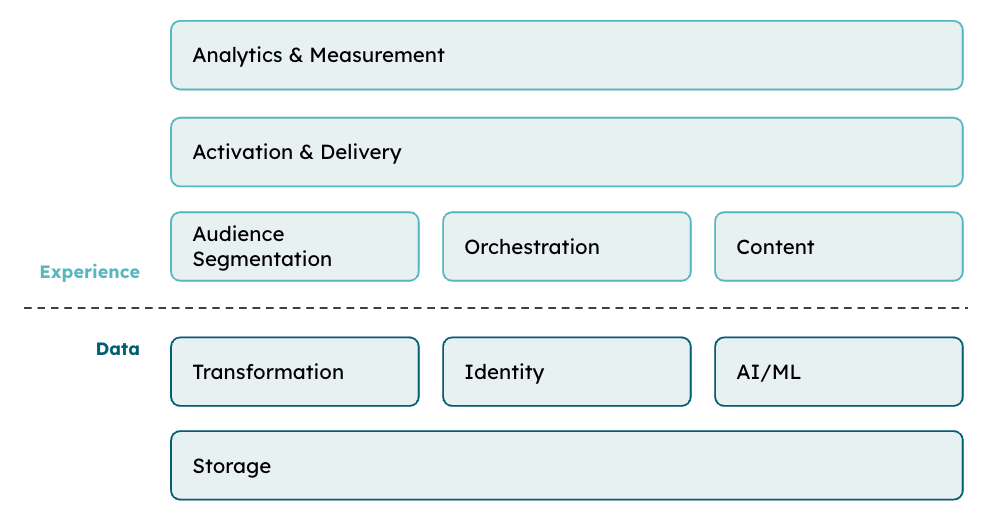
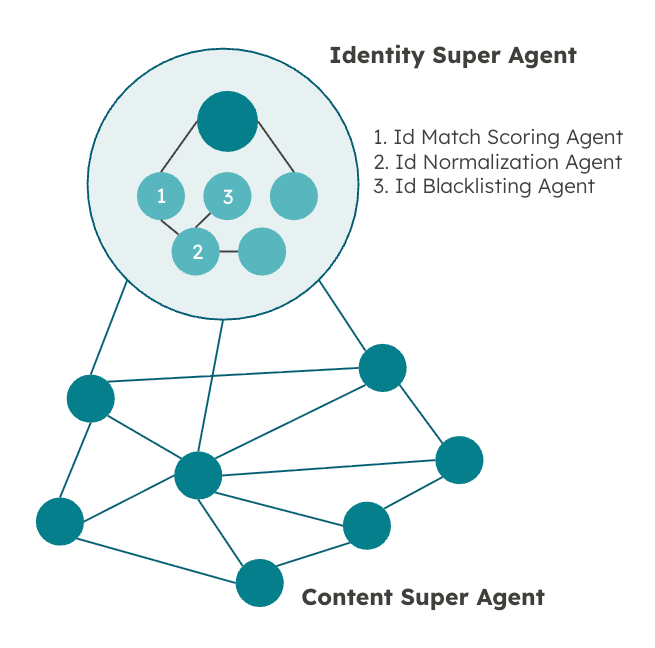
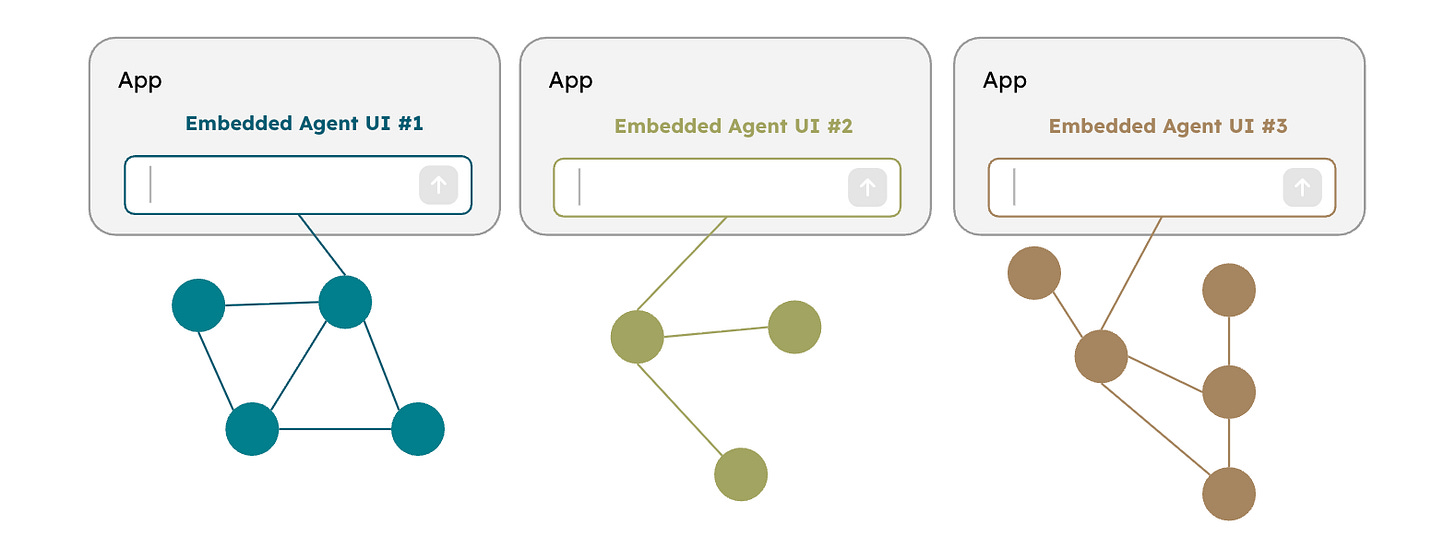
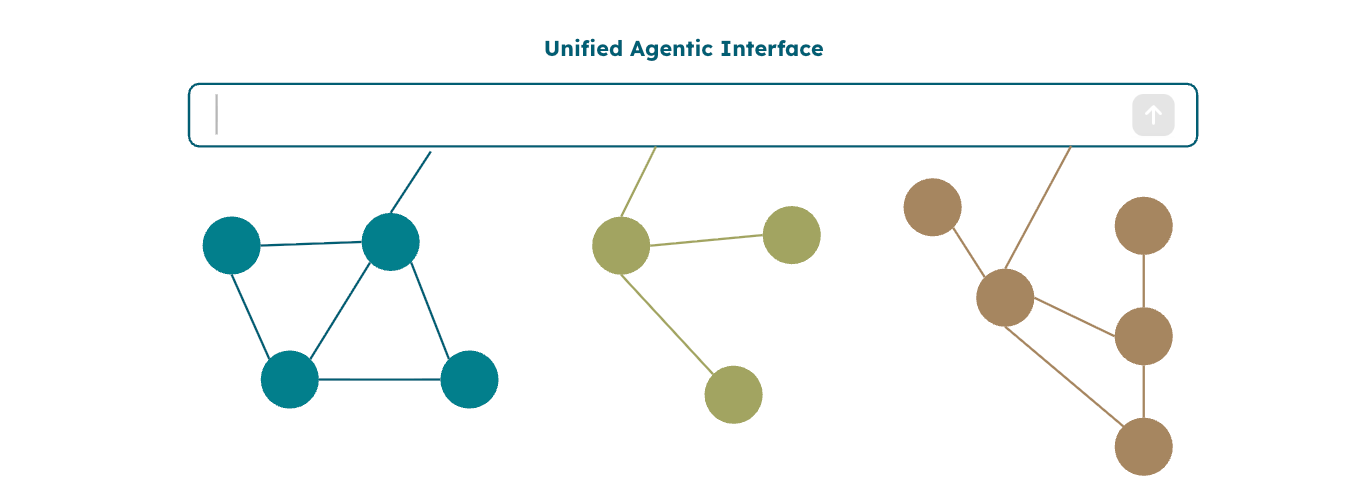
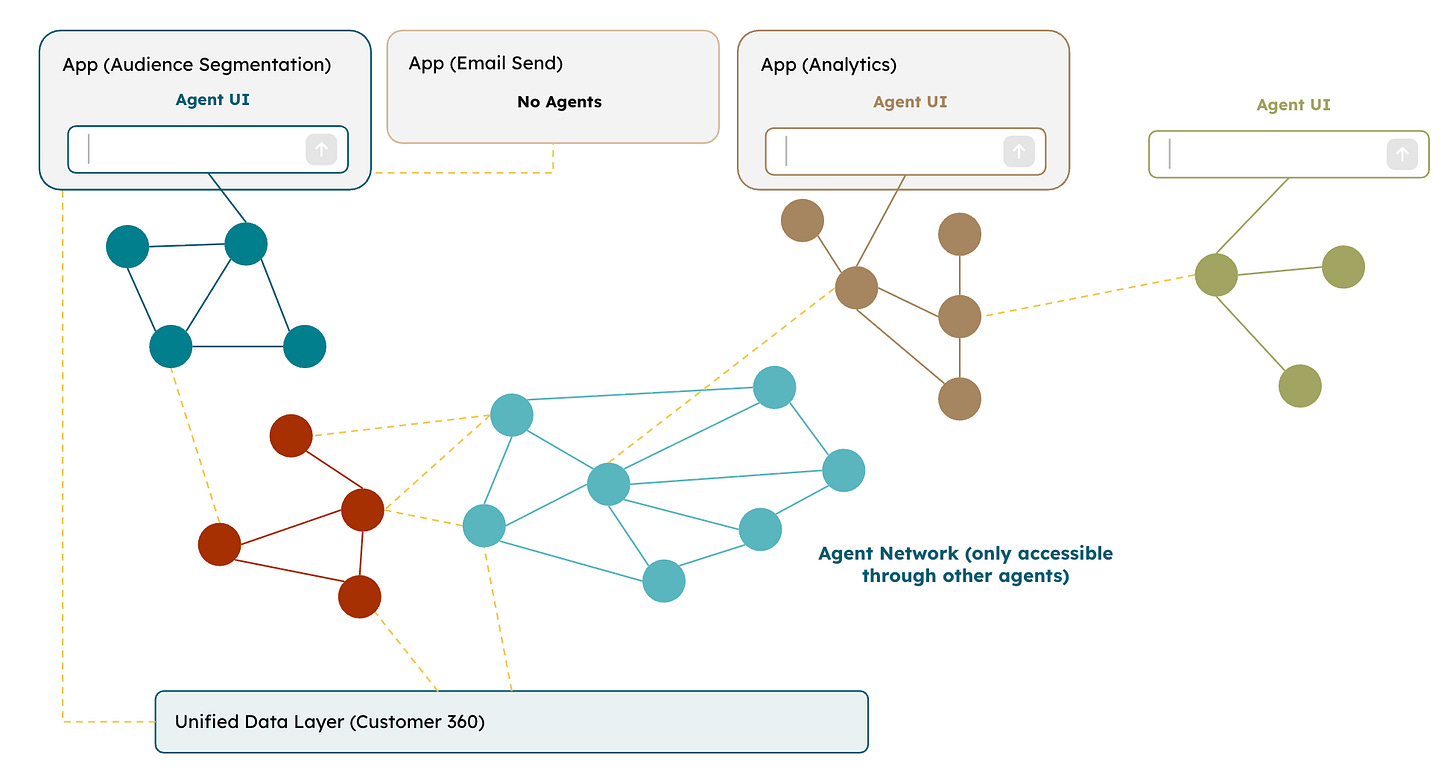
Explaining martech using the "simplistic" squares is already a challenge, imagine showing graphs similar to neural networks!